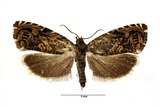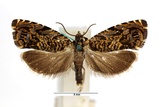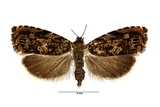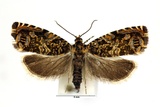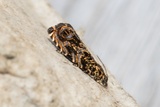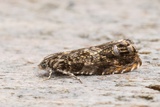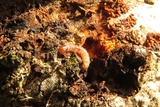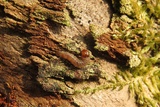Enarmonia formosana (Scopoli, 1763) Species
Last modified: Nov. 23, 2025, 5:27 p.m.
A fairly common species in Belgium, especially in the northern part.
Details
- Classification
- Family: Tortricidae > Subfamily: Olethreutinae > Tribus: Enarmoniini > Genus: Enarmonia > Species: Enarmonia formosana
- Vernacular names
- Schorsboorder (NL), Cherry Bark Tortrix (EN), Obstbaumrindenwickler (DE)
- Synonyms
- Enarmonia woeberiana (Denis & Schiffermüller, 1775)
- First mention in Belgium
- De Sélys-Longchamps E. 1844. Énumération des insectes Lépidoptères de la Belgique. — Mémoires de la Société royale des Sciences de Liége 2: 1–35. On page 21.
- Status
-
Native
Distribution
Imago
Wingspan 15–19 mm. Forewings are black with distinctive yellow, orange, and silvery markings and a conspicuous ocellus with alternating black and yellow bands, a sharply defined costal strigulae in the apical half which are bordered dorsad by ferruginous-orange. Hindwings are dark greyish brown with white fringe.
Egg
Females lay eggs singly or in small clusters on tree bark.
Bionomics
The larva bores in the bark and feeds under the surface, especially in the thick bark at the foot of older trees en in places where the bark already is swollen by old wounds or cankers.
The presence of the larva in its turn causes gumming and loosening of the bark. Reddish brown frass in bark fissures betrays the presence of the larva.
It hibernates. Pupation occurs in the larval feeding tunnels close to the surface of the bark or within the frass tubes.
They emerge at about 10 a.m. and then rest on the trunk till noon. They are active in sunshine and later come to light.
Flight periods
The adults have been observed from late April till late September.
Observed on
- Substrates:
- Polyphagous
The larva feeds on various rosaceous trees, especially mature Prunus avium and Malus spp. trees. Also on Prunus cerasus and other Prunus spp, Pyrus.
Habitat
It inhabits woods, parks, orchards, mature ornamental cherry trees along suburban roads and gardens.
